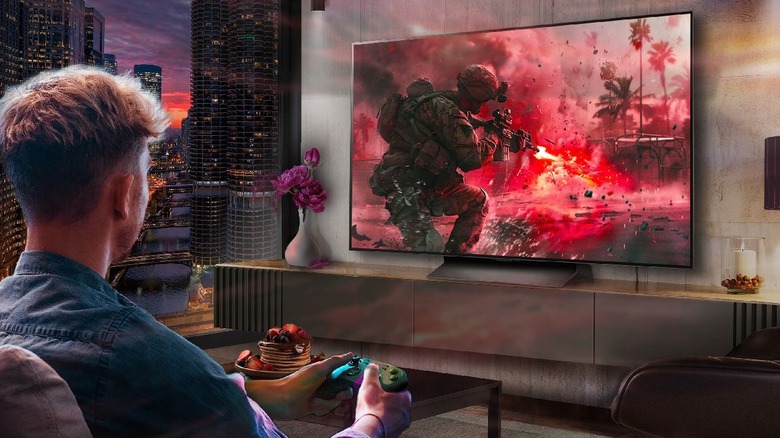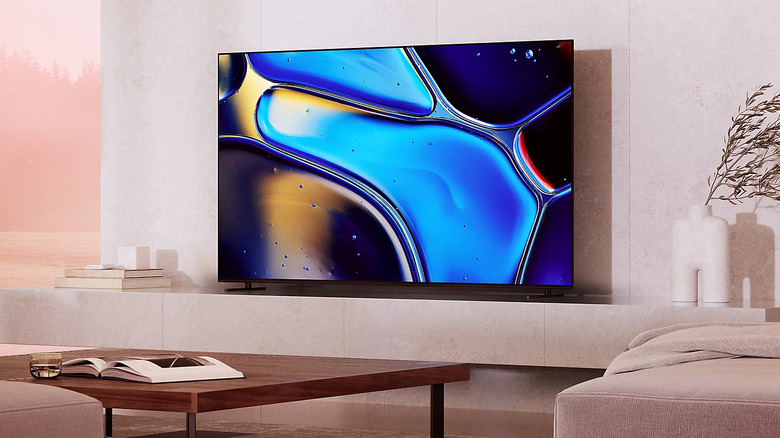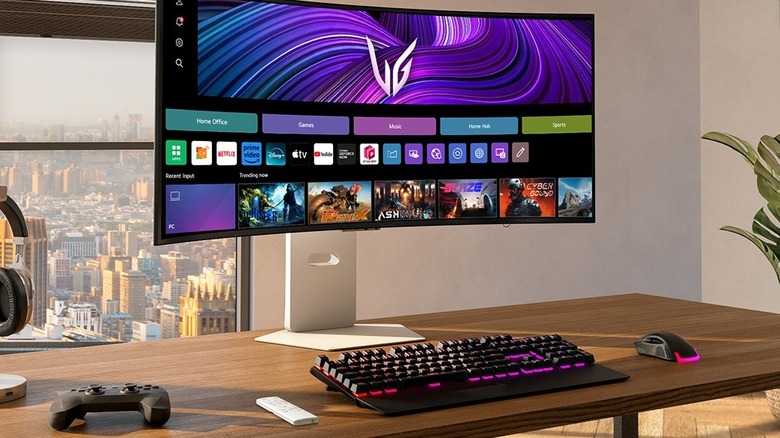Things You Should Do To Help Prevent OLED Screen Burn-In
OLED screens have been around for a while but gained widespread popularity in the last decade. They're celebrated for their superior visual quality, with bright colors contrasting against darker blacks. The one downside of OLEDs, however, is that they fall victim to screen burn-in. Here's why this happens and how to prevent it.
It's important to understand how OLEDs actually work. Unlike the previous Liquid Crystal Display (LCD) technology, each pixel in an OLED screen is self-lit rather than having an LED backlight. This means that a specific pixel in an OLED screen can be left unlit to achieve a truer black color. For LCD screens, all pixels would have to be backlit resulting in blacks appearing more gray and washed out.
Despite this superior visual quality, though, OLEDs come with a major drawback known as burn-in. Screen burn-in is when a pixel or pixels become permanently discolored, which means being unable to show anything but a specific image. This happens when the same image has been displayed on a screen for an extended amount of time. It could be caused by something like a bright, high-contrast image from a paused screen.
OLED screens are more susceptible to burn-in as each pixel is emitting its own light, which can cause them to degrade faster. While there are some ways to fix OLED screen burn-in, prevention is key. Once you've had some burn-in, it's practically impossible to reverse, so it's better to act quickly. Any device with an OLED screen can suffer from this — not only TVs or monitors but also smartphones, smart watches, and even the OLED version of the Nintendo Switch! For now, we're going to focus on TVs and monitors, but the general principles apply everywhere.
How to prevent burn-in on OLED TVs and monitors
OLED TVs have various tools and settings that help you prevent burn-in. Most of these are run automatically by your display, so let's start by going over what steps you can take.
The main thing you can do yourself is to make sure your TV isn't left on or paused on the same image for too long. Even if you haven't left a paused image on screen, a static element on part of the screen could lead to burn-in. This might be something like a TV channel's logo or a bit of UI from a videogame. Beyond turning your display off when not in use, there are other steps you can take. Some OLED TVs, such as LG's range, allow you to set a timer to turn the TV off after a certain amount of time. LG TVs also allow you to set a screensaver to appear after a static image has been detected for two minutes.
Both LG and Sony OLED TVs let you turn on Screen Shift or Pixel Shift settings. These run automatically once turned on and help prevent burn-in by slightly moving the image on screen at regular intervals. Pixel Shift is automatically on for Samsung OLED TVs.
LG also advises using Logo Luminance Adjustment, which lowers the brightness of on-screen logos. Similarly, Sony TVs allow you to enable automatic screen brightness. Models that have a light sensor will adjust your TV's or monitor's brightness based on the room's lighting. It should be said that besides such features, some things just happen on their own. Whether it's Panel Refreshing or Panel Calibration, there are many settings manufacturers automatically enable to ensure the longevity of your OLED screen.
How to prevent burn-in on OLED monitors
When it comes to monitors, we use them differently than TVs, so it's worth discussing. Let's start with some basic, but important advice. Set your screen to go to sleep after a few minutes of inactivity, or have a screen saver. Next, lower the brightness and contrast of your monitor to a level where you still feel comfortable with the image visibility.
There are other settings you can use to help prevent burn-in, such as setting your taskbar to auto hide, so that it doesn't exist as a fixed element on screen. Likewise, consider not keeping icons on your desktop, as a bright one might stand in contrast to the desktop background. When watching videos or playing games, display these in full screen so that there aren't static elements on the non-media part of the screen. It's also a good idea to use a dark theme wherever possible, as that'll cause less strain on the pixels than using a bright theme.
Luckily, burn-in is not a given under normal conditions. Using a screen for eight hours or more a day at full brightness, though, is not considered a normal usage condition, so it's better to keep the brightness lower and follow the housekeeping tips mentioned above.
If you play certain games for hours on end, you might find them damaging your OLED screen. In those cases, look for specialized solutions. For example, Many users complained about burn-in as a result of fixed UI elements while playing "World of Warcraft." One reported getting burn-in from the game's map and action bars. Fortunately, an add-on exists that fixes the problem for that particular title by dynamically shifting the UI and applying a full screen effect when you are stationary in-game.


